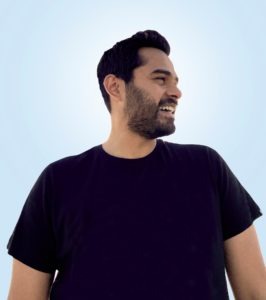Horseplay Encouraged
| BY DAVID BARNARD |
| Horseplay encouraged Equestrian therapy makes use of its “neigh”-sayers |
| As an administrator, how often do you walk around your facility and see residents nuzzling their caregivers’ necks, brushing their hair, or hand-feeding them carrots and apples? At Deerings Nursing and Rehabilitation in Odessa, Texas, I have the pleasure of seeing that every week. Our residents are blessed with the attention of three special volunteers who thrive on their affection: Lucky, Cody, and Bandit are the heart and soul of Deerings’ Equine Activities Program. While many horsemen are aware of the value of horses as therapeutic tools for children with disabilities, I am unaware of anyone else who uses them to work with the elderly in a nursing home setting. What started out as a hopeful experiment has blossomed into a successful therapeutic program. I have always loved horses. In 1995, I bought a black Tennessee Walking Horse stud. Lucky was so calm and sensible that I decided to ride him to the nursing home where I worked at the time as a special treat for the residents. They were all so excited to see and touch a horse. One lady, Anna, was brave enough to ride as long as I led Lucky. Anna had suffered a stroke and was physically sound in every way except for her speech. She could only utter one word, and then 30 seconds to a minute would pass before she could say another. But when leading her around on Lucky, I looked back at Anna and asked how she liked the ride. She said, “I like it just fine. This is the first time I’ve ever been on a horse!” I nearly fell over! We walked a bit longer and talked some more. Then I helped her down, hugged her, and hugged Lucky, too. Back on the ground, Anna immediately reverted to one-word conversations, but I will never forget this amazing episode. As happens in careers, I moved on to other facilities, and I could bring Lucky to work occasionally. Even though he has been somewhat aloof with me on occasion, Lucky never hesitates to put his head down in the lap of a wheelchair-bound resident so he can be petted. He is also a bit of a ham and has posed for our local paper and appeared on local TV news more than once. The first few times I brought Lucky to work at Deerings, Libby, an elderly mentally challenged lady, would watch through a window. After a while, she ventured outside for a closer look. On a later visit, she fearfully petted him. Finally, I helped her up into the saddle and stood with her while she held my neck in a death grip. Eventually she relaxed and sat erect for nearly three minutes. She didn’t want the horse to move; she just wanted to sit there. After she dismounted, it seemed that her life had changed. Always a timid soul, Libby became more comfortable expressing herself and acting more assertively. Although she remains difficult to understand, I believe she accomplished her goal: Bravely mounting a horse, she saw the world from a new perspective. That was enough for her, and I couldn’t be happier. Two years ago, I lobbied Daybreak Healthcare, Deerings’ operating company, to expand this program. The position of Equine Activities Director was approved and, after a couple hiring hiccups, Jodie Rose was hired. Jodie has a master’s degree in agriculture, focusing on equine nutrition and reproduction. With a ranching background and college experience working in a therapeutic riding program designed for children with disabilities, Jodie was a perfect fit for the program. The glamour other employees associated with Jodie’s position soon disappeared. The heat, dirt, manure, and hard physical work give this activity a downside, but assisting once-broken bodies and spirits to mend and succeed is overwhelmingly satisfying. On her first day at work she and I built a ramp and mounting platform that put wheelchair residents at saddle-horn level to enhance resident safety and save our backs. Daybreak funded the purchase of a 50′-round pen, hay, and other equipment, including belts and helmets for resident safety. We use Lucky, my Tennessee Walker (20 years old); Cody, my wife Trudy’s paint (a retired 15-year-old ranch horse); and Jodie’s quarter horse Bandit (about to turn 30 years old) for our work with residents. With Lucky’s smooth gait, Cody’s elastic gait, and Bandit’s choppy gait, Jodie is able to match horse to resident according to the resident’s need. For example, a person with low muscle tone might need Bandit to awaken sleeping nerves and muscles. A person with high muscle tone would benefit from Lucky’s subtle stimulation. Cody, our most responsive horse, suits several types of riders. The movements that a horse makes when walking transfer to his rider’s body and mimic the movements made in normal walking. Residents who have difficulty walking quickly see improvement after a few riding sessions. With the addition of some perimeter fencing, we were able to unwind our 50′-round pen to create a 50′ + 100′-riding arena, a more effective layout because it provides enough area for the straight-line walking and trotting gaits that are often necessary to generate the proper stimulation for the resident. The nervous system stimulation and the passive strengthening that occur when riding frequently improve residents’ balance issues. For example, Ray is a resident who used to fall every month because of his balance problems. Since he started riding twice weekly, he has had no balance-related falls in the past six months. At 83, Ray hadn’t ridden since childhood, and cerebrovascular issues had left him frequently confused with no short-term memory. Despite this, he quickly progressed to independent riding, to the thrill and amazement of his family. In fact, Ray easily completed his two-mile leg in a recent Pony Express reenactment. Here are a few more personal stories to illustrate how my four-legged friends help care for our residents: Twelve years before he met Lucky, Mitch lost more than 90% of his brain matter in a motorcycle accident. Although he was too weak and thin to rise from a chair and walk, we got him mounted and promised him future rides if he would eat more so he could get stronger. Prone to some colorful language, Mitch had difficulty controlling his emotions and was usually noncommunicative. Although doctors predicted his attention span would never exceed 30 seconds, he is now able to ride for 15- to 30-minutes segments and ride patterns, as well. His temperament has improved, and he can carry on involved conversations about his working in an oil field, motorcycles, and his U.S. Navy service. Mitch enjoys participating in all patriotic holidays and celebrations. He is, by the way, another of our Pony Express riders. Another special resident, George, is unfortunately no longer with us. His light blue eyes sparkled when he smiled, and he was a champ of a guy. As a youngster, George showed up for his first rodeo in Merkel, Texas, bareheaded and barefoot. He borrowed a hat and boots and won second place in bronco riding and first place in bull riding. When I met George, he’d been paralyzed on one side by a stroke, his opposite leg had been amputated, and prostate cancer had taken its toll. One day, though, he was feeling pretty good, so I asked him if he was interested in riding Lucky. He agreed. Lifting him into the saddle was quite a chore, but once George was secure in the saddle, I led Lucky around the courtyard. Although George and I had talked about the future and made independent riding his goal, that was to be George’s last ride on this earth. When we finished, I lifted George off Lucky and sat him in his wheelchair. As I straightened up, I saw George grinning from ear to ear. Looking at his blue eyes twinkling in the sunlight, I said, “You just never get over that feeling do you, George?” He agreed, and my heart filled with joy for this old cowboy and for our shared love of horses and western life. On the other hand, Martha was a different type of equestrian. Having had worked in the real estate market, she had always been a pretty tough businesswoman until Alzheimer’s disease necessitated nursing home care. On her third day at Deerings, we had the horses out, and they quickly captured her attention. When asked, she eagerly accepted a ride. A few days later, her daughter came to visit. When she was told about Martha’s horseback ride she was incredulous and said, “Mom hates horses, she has always hated them!” But every horse day thereafter, Martha had to have a ride. Alzheimer’s had strangely neutralized her dislike for horses. Perhaps her memory loss actually enabled her to enjoy life from the back of a horse in the midst of her clouded existence. Many other residents have gained pleasure and physical improvement through our equestrian program. Manuel was a former cowboy who had worked many years on the Prude Ranch near Fort Davis. Alzheimer’s had clouded his life, as well. Being wheelchair-bound had made it difficult for him to spread his legs enough to sit on a saddle, so we started him off with a bareback pad, moved on to an English saddle, then to an Aussie saddle, and finally to the western saddle that was so familiar to him. Coincidentally, Jodie’s horse Bandit was raised in the same area where Manuel lived and, one day while Manuel was riding, he told Jodie all about Bandit’s life history-how he was as a yearling, and as a two-year-old, and so forth. This man, who frequently forgot familiar faces, places, and the day of the week, remembered this horse and remembered him well. Although ordinarily feeble and confused, Manuel was at home on horseback-he could collect the horse and work him in the tradition of the vaquero. We were privileged to see this. The one slight exception to our positive experiences of putting residents on horseback was Pilar. He exhibited excellent horsemanship skills from the start. However, his interest in taking direction (especially from a woman) was not tops. One day, he attempted to head for Mexico with Cody. After that we had to put a halt to his riding for safety’s sake. The elderly are not the only people who benefit from equestrian therapy. A man named Wave, a hit-and-run victim facing extensive rehab and possible permanent facility placement, was a relatively young resident with little interest in horses. He had two children, Mariah and Ryan. Eight-year-old Mariah understood her dad’s problems and loved visiting him. Five-year-old Ryan, on the other hand, didn’t understand why his dad was sick. Ryan was angry and was actually forced to visit his dad. On one visit, though, when I suggested that the kids ride Lucky, they were thrilled. Pictures were taken, and we led Lucky and the children up on the front porch so their dad could see them through his window. The once angry, withdrawn Ryan grinned and waved wildly to his father. The exchange of love and excitement through that window was wonderful. During the next few weeks, Ryan’s attitude improved. Unfortunately, though, Wave passed away. But his wife Kayla and the children still occasionally stop by to visit and ride horses. Imagine a youngster telling his mom, “Let’s go to the nursing home and ride horses with Grandpa!” It happens here. I’ve lifted many residents up into the saddle over the years. The gratification I’ve received from the expressions on their faces has been immeasurable. At Deerings, we know the best thing for the inside of a man (or a woman) is the outside of a horse. |
Related Articles
Topics: Activities , Articles











